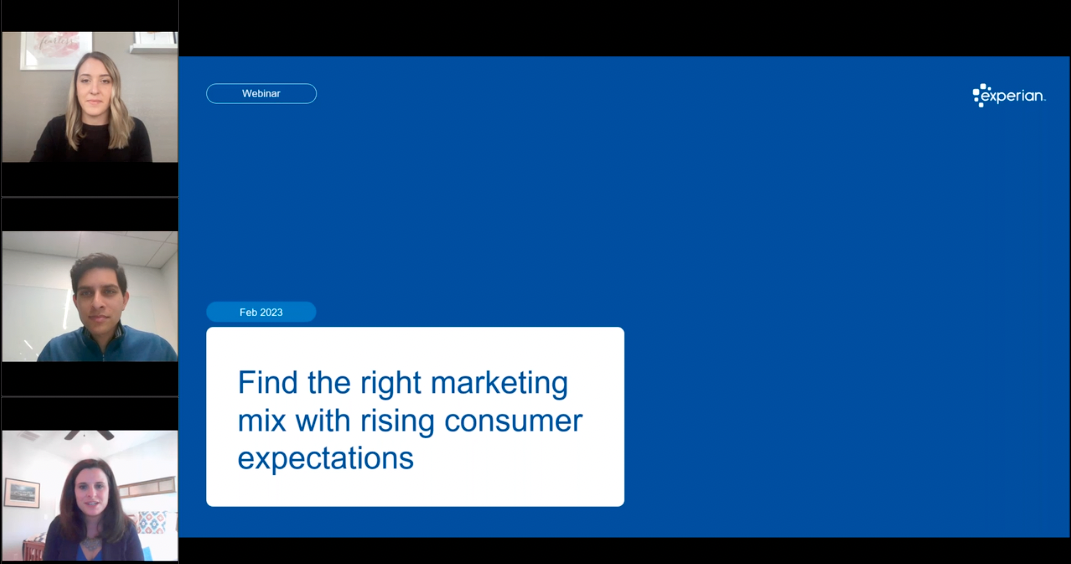Contextual ad targeting paves the way for new opportunities
Advertisers and marketers are always looking for ways to remain competitive in the current digital landscape. The challenge of signal loss continues to prompt marketers to rethink their current and future strategies. With many major browsers phasing out support for third-party cookies due to privacy and data security concerns, marketers will need to find new ways to identify and reach their target audience. Contextual ad targeting offers an innovative solution; a way to combine contextual signals with machine learning to engage with your consumers more deeply through highly targeted accuracy. Contextual advertising can help you reach your desired audiences amidst signal loss – but what exactly is contextual advertising, and how can it help optimize digital ad success?
In a Q&A with our experts, Jason Andersen, Senior Director of Strategic Initiatives and Partner Solutions with Experian, and Alex Johnston, Principal Product Manager with Yieldmo, they explore:
- The challenges causing marketers to rethink their current strategies
- How contextual advertising addresses signal loss
- Why addressability is more important than ever
- Why good creative is still integral in digital marketing
- Tips for digital ad success
By understanding what contextual advertising can offer, you’ll be on the path toward creating powerful, effective campaigns that will engage your target audiences.
Check out Jason and Alex’s full conversation from our webinar, “Making the Most of Your Digital Ad Budget With Contextual Advertising and Audience Insights” by reading below. Or watch the full webinar recording now!
Macro impacts affecting marketers
How important is it for digital marketers to stay informed about the changes coming to third-party cookies, and what challenges do you see signal loss creating?
Jason: Marketers must stay informed to succeed as the digital marketing landscape continuously evolves. Third-party cookies have already been eliminated from Firefox, Safari, and other browsers, while Chrome has held out. It’s just a matter of time before Chrome eliminates them too. Being proactive now by predicting potential impacts will be essential for maintaining growth when the third-party cookie finally disappears.
Alex: Jason, I think you nailed it. Third-party cookie loss is already a reality. As regulations like the General Data Protection Regulation (GDPR) and the California Consumer Privacy Act (CCPA) take effect, more than 50% of exchange traffic lacks associated identifiers. This means that marketers have to think differently about how they reach their audiences in an environment with fewer data points available for targeting purposes. It’s no longer something to consider at some point down the line – it’s here now!
Also, as third-party cookies become more limited, reaching users online is becoming increasingly complex and competitive. Without access to as much data, the CPMs (cost per thousand impressions) that advertisers must pay are skyrocketing because everyone is trying to bid on those same valuable consumers. It’s essential for businesses desiring success in digital advertising now more than ever before.
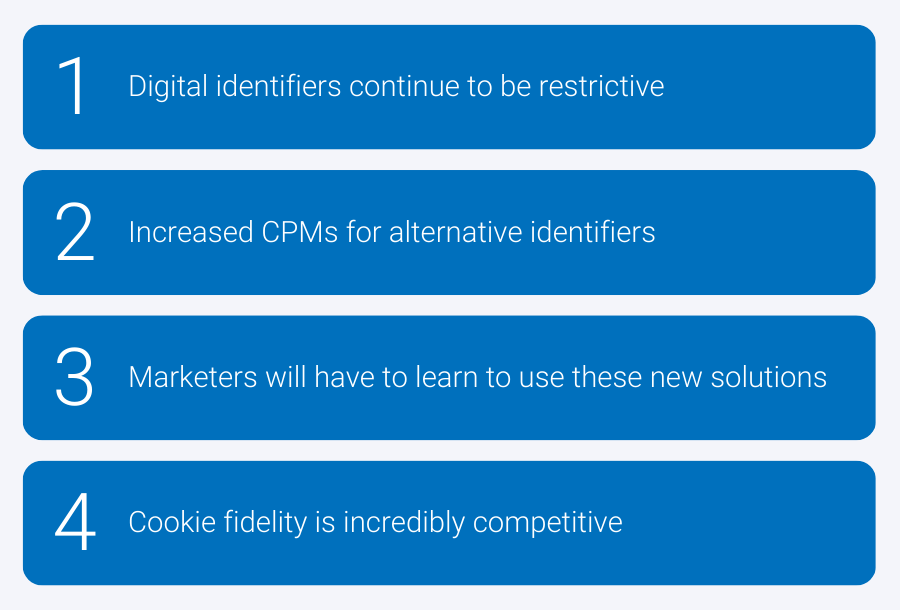
Contextual ad targeting: A solution for signal loss
How does contextual ad targeting help digital marketers find new ways to reach and engage with consumers? What can you share about some new strategies that have modernized marketing, such as machine learning and Artificial Intelligence (AI)?
Jason: We’re taking contextual marketing to the next level with advanced machine learning. We are unlocking new insights from data beyond what a single page can tell us about users. As third-party cookies go away, alternative identifiers are coming to market, like RampID and UID2. These are going to be particularly important for marketers to be able to utilize.
As cookie syncing becomes outdated, marketers will have to look for alternative methods to reach their target audiences. It’s essential to look beyond cookie-reliant solutions and use other options available regarding advertising.
Alex: I think, as Jason alluded to, there’s a renaissance in contextual advertising over the last couple of years. If I were to break this down, there are three core drivers:
- The loss of identity signals. It’s forcing us to change, and we must look elsewhere and figure out how to reach our audiences differently.
- There have been considerable advances in our ability to store and operate across a set of contextual signals far more extensive than anything we’ve ever worked with in the past and in far more granular ways. That’s a huge deal because when it comes to machine learning, the power and the impact of those machine learning models are entirely based on how extensive and granular the data set is that you can collect. Machine learning can pull together critical contextual signals and figure out which constellations, or which combinations of those signals, are most predictive and valuable to a given advertiser.
- We can tailor machine learning models to individual advertisers using all those signals and find patterns across those in ways that were previously impractical or unfeasible. The transformation is occurring because of our ability to capture much more granular data, operate across it, and then build models that work for advertisers.
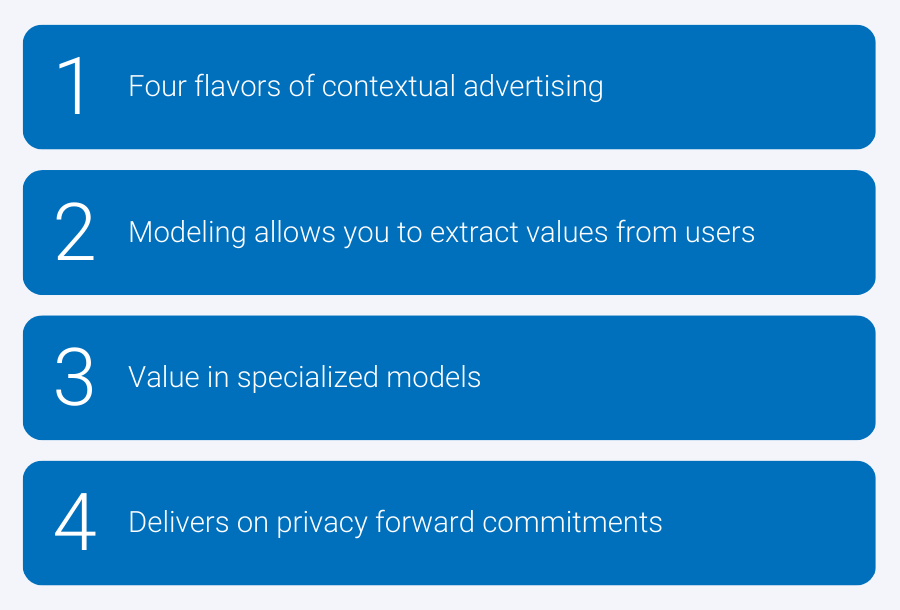
Addressability: Connect your campaigns to consumers
How does advanced contextual targeting help marketers reach non-addressable audiences?
Jason: Advanced contextual targeting allows us to take a set of known data (identity) and draw inferences from it with all the other signals we see across the bitstream. It’s taking that small seed set of either, customers that transacted with you before that you have an identity for, or customers that match whom you’re looking for. We can use that as a seed set to train these new contextual models. We can now look at making the unknown known or the unaddressable addressable. So, it’s not addressable in an identity sense, it is addressable in a contextual or an advanced contextual sense that’s made available to us, and we can derive great insight from it.
One of the terms I like to use is contextual indexing. This is where we take a set of users we know something about. So, I may know the identity of a particular group of households, and I can look at how those households index against any of the rich data sets available to us in any data marketplace, for example, the data Yieldmo has. We can look at how that data indexes to those known users to find patterns in that data and then extrapolate from that. Now we can go out and find users surfing on any of the other sites that traditionally don’t have that identifier for that user or don’t at that moment in time and start to be able to advertise to them based on the contextually indexed data.
Historically, we’ve done some contextual ad targeting based on geo-contextual, and this is when people wanted to do one to one marketing, and geo-contextual outperformed the one to one. But marketers weren’t ready for alternatives to one to one yet. We want marketers to start testing these solutions. Advertisers must start trying them, learning how they work, and learn how to optimize them because they are based on a feedback loop, and they’re only going to get better with feedback.
Alex: Jason, you described that perfectly. I think the exciting opportunity for many people in the industry is figuring out how to reach your known audience in a non-addressable space, that is based on environmental and non-identity based signals, that helps your campaign perform. Your known audience are people that are already converting – those who like your products and services and are engaged with your ads. Machine learning advancements allow you to take your small sample audience and uncover those patterns in the non-addressable space.
It’s also worth noting that in this world in which we are using seed audiences, or you are using your performing audiences to build non-addressable counterpart targeting campaigns, having high-quality, privacy-resilient data sets becomes incredibly important. In many cases, companies like Experian, who have high quality, deep rich training data, are well positioned to support advertisers in building those extension audiences. As we see the industry evolve, we’re going to see some significant changes in terms of the types of, and ways in which, companies offer data, and make that available to advertisers for training their models or supporting validation and measurement of those models.
Jason: Addressable users, the new identity-based users, are critical to marketers’ performance initiatives. They’re essential to training the models we’re building with contextual advertising. Together, addressable users and contextual advertising are a powerful combination. It’s not just one in isolation. It’s not just using advanced contextual, and it’s not just using the new identifiers. It’s using a combination to meet your performance needs.
It’s imperative to start thinking about how you can begin building your seed audiences. What can you start learning from, and how do you put contextual into play today? You are looking to build off a known set and build a more advanced model. These can be specialized models based on your data. You can hone in and create a customized model for your customer type, their profile, and how they transact. It’s a greenfield opportunity, and we’re super excited about the future of advanced contextual targeting.
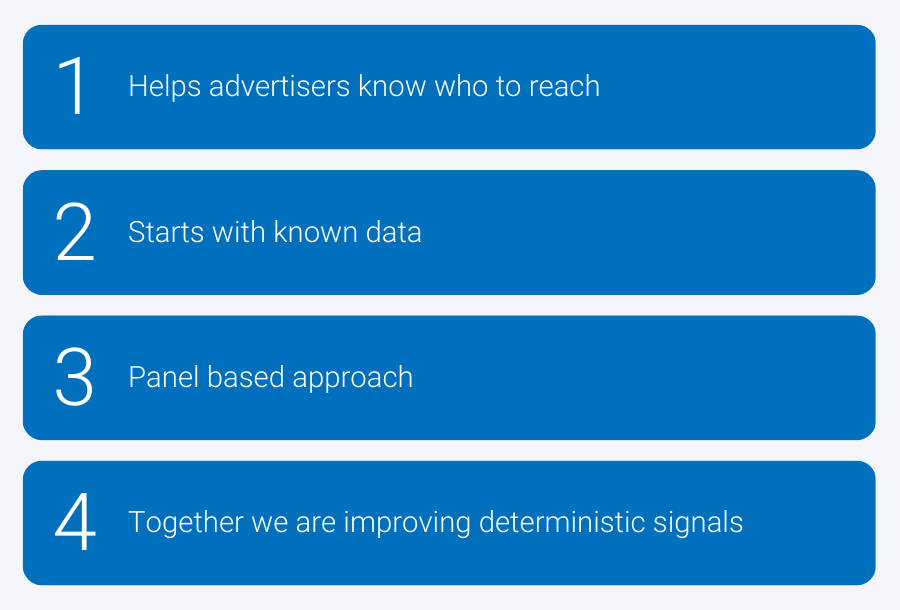
Turn great creative into measurable data points
Why does good creative still play an integral part in digital advertising success?
Jason: Good creative has always been meaningful. It’s vital in getting people to click on your ad and transact. But it’s becoming increasingly important in this new world that we’re talking about, this advanced contextual world. The more signal that we can get coming into these models, the better. Good creative in the proper ad format that you can test and learn from is paramount. It comes back to that feedback loop. We can use that as another signal in this equation to develop and refine the right set of audiences for your targeting needs.
Alex: If you imagine within the broader context of identity and signal loss, creative and ad format becomes incredibly powerful signals in understanding how different audiences interact with and engage with different creative. In the case of the formats that serve on the Yieldmo exchange, we’re collecting data every 200 milliseconds around how individual users are engaging with those ads. Interaction data like the user scrolling back or the number of pixel seconds they stay on the screen, fills this critical gap between video completes and clicks. Clicks are sparse and down the funnel, and views and completes are up the funnel. All those attention and creative engagement type metrics occupy the sweet spot where they’re super prevalent, and you can collect them and understand how different audiences engage with your ads. That data lets you build powerful models because they predict all kinds of other downstream actions.
Throughout my career, I learned that designing or tailoring your creative to different audience groups is one of the best ways to improve performance. We ran many lift studies with analysis to understand how you can tailor creative customized for individual audiences. That capability and the ability to do that on an identity basis is starting to deteriorate. The ability to do that using a sample of data or using a smaller set of users, either where you’re inferring characteristics or you’re looking at the identity that does exist in a smaller group, becomes powerful for being able to customize your creative to tell the right story to the right audience. When you layer together all the interaction data collected at the creative level on top of all the contextual and environmental signals, you can build powerful models. Whether those are driving proxy metrics, or downstream outcomes, puts us in a powerful position to respond to the broader loss of identity that we’ve relied on for so many years.
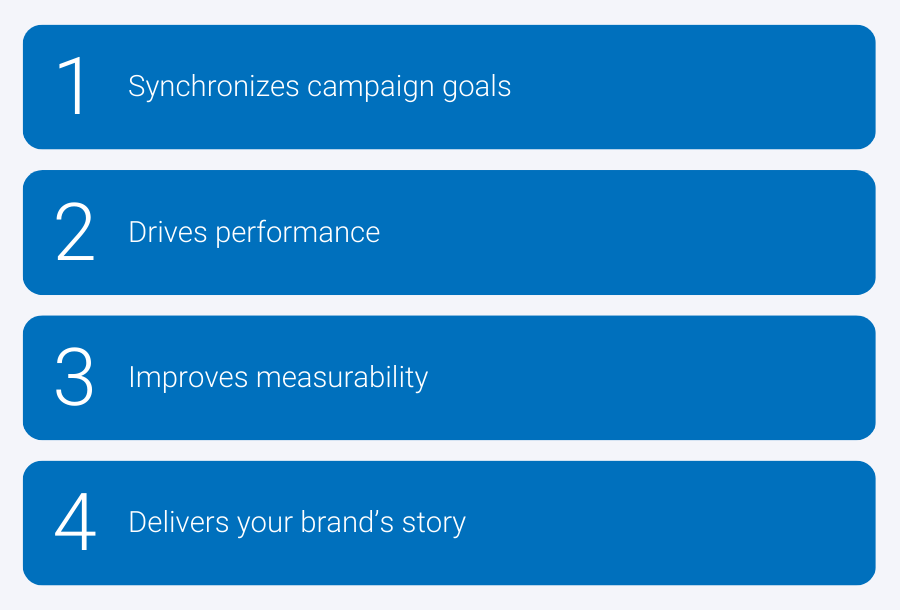
Our recommendations for marketers for 2023 and beyond
Do you have recommendations for marketers building out their yearly strategies or a campaign strategy?
Jason: Be proactive and start testing and learning these new solutions. I mentioned addressability and being in the right place at the right time. That’s easier in today’s third-party cookie world. But as traditional identity is further constricted, you will have these first-party solutions that will not be at scale, so you’re less likely to find your user at the scale you want. It would be best if you thought about how to reach that user at the right place at the right time. They may not be seen from an identity basis. They might not be at the right place at the right time when you were delivering or trying to deliver an ad. But you increase your chance of reaching them by building these advanced contextual targeting audiences using this privacy-safe seed ‘opted-in’ user set; this is a way to cast that wider net and achieve targeted scale.
Alex: Build your seed lists, test your formats with different audiences, and understand what’s resonating with whom. Take advantage of some of the pretty remarkable advances in machine learning that are allowing us, really, for the first time to fully uncork the potential and the opportunity with contextual in a way that we’ve never done before.
Jason: At the end of the day, it’s making the unaddressable addressable. So, it’s a complementary strategy; having that addressable piece will feed the models. But also, that addressable piece still needs to be identity-based, addressable still needs to be part of your overall marketing strategy, and you need to complement it with other strategies like advanced contextual targeting. The two of them together are super complimentary. They learn from each other, and it’s a cyclical loop. Now is the time to take advantage and start testing and understanding how these solutions work.
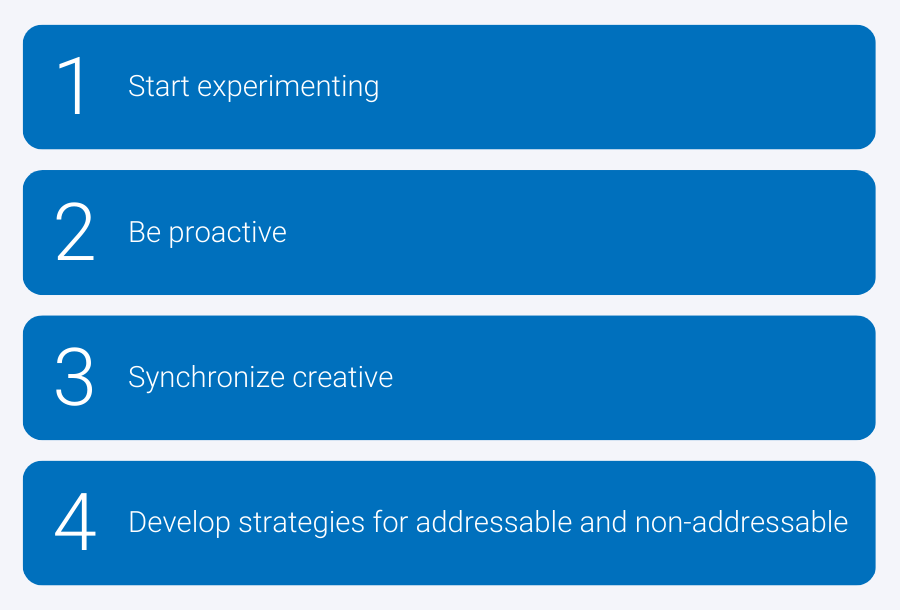
We can help you get started with contextual ad targeting
Contextual advertising can help you stay ahead of the curve, identify your target audience, and continue to drive conversions despite signal loss. We’ve partnered with Yieldmo to help make sure that your marketing campaigns are reaching the right target audiences on the platforms that are most relevant. To get started with contextual ad targeting to reach the right audience at the right time and drive conversions, contact our marketing professionals. Let’s get to work, together.
Find the right marketing mix in 2023
Check out our webinar, “Find the right marketing mix with rising consumer expectations.” Guest speaker, Nikhil Lai, Senior Analyst from Forrester Research, joins Experian experts Erin Haselkorn, and Eden Wilbur. We discuss:
- New data on the complexity and uncertainty facing marketers
- Consumer trends for 2023
- Recommendations on finding the right channel mix and the right consumers
About our experts

Jason Andersen, Senior Director, Strategic Initiatives and Partner Solutions, Experian
Jason Andersen heads Strategic Initiatives and Partner Enablement for Experian Marketing Services. He focuses on addressability and activation in digital marketing and working with partners to solve signal loss. Jason has worked in digital advertising for 15+ years, spanning roles from operations and product to strategy and partnerships.

Alex Johnston, Principal Product Manager, Yieldmo
Alex Johnston is the Principal Product Manager at Yieldmo, overseeing the Machine Learning and Optimization products. Before joining Yieldmo, Alex spent 13 years at Google, where he led the Reach & Audience Planning and Measurement products, overseeing a 10X increase in revenue. During his time, he launched numerous ad products, including YouTube’s Google Preferred offering. To learn more about Yieldmo, visit www.Yieldmo.com.
Latest posts
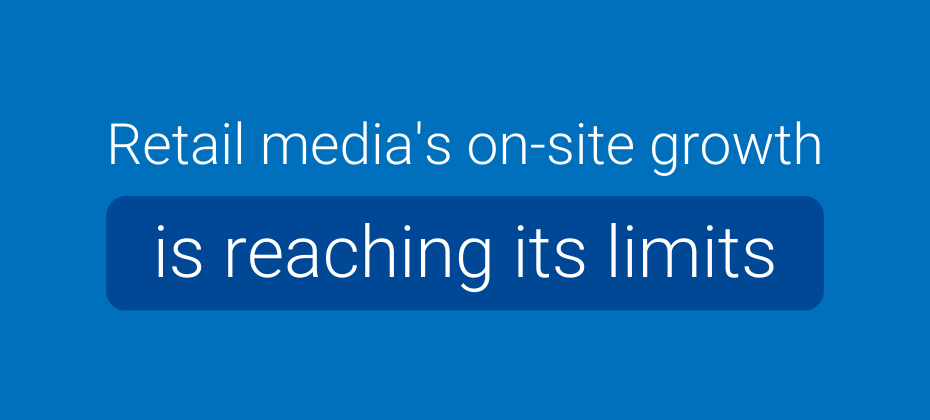
Retail media networks (RMNs) are on the brink of a major shift. While they are poised to capture over 20% of ad spend in 2025, on-site monetization won\’t be the growth driver it once was. With advertisers consolidating spend among just six or seven RMNs on average, including giants like Amazon and Walmart, it’s hard for smaller RMNs to compete. Off-site retail media ad spend is projected to grow 42.1% in 2025—nearly three times the rate of on-site growth (15.1%), according to eMarketer\’s November 2024 forecast. This dramatic shift underscores that while on-site placements are maturing, off-site is where the momentum (and money) is heading. To remain competitive, RMNs must move beyond traditional, on-site placements and embrace a broader, more integrated approach to media activation. The future of retail media is about utilizing enriched first-party data to drive performance across the open web, connected TV (CTV), and other digital channels. Break free from your owned and operated properties Historically, RMNs have limited ad placements to their own digital properties. While this approach has delivered high-margin returns—on-site ad margins can reach 70-90%, compared to 20-40% for off-site—it’s also inherently limiting. Retailers only have so much owned inventory to sell, and advertisers demand greater scale and flexibility. As brands push for more reach, RMNs must extend their impact beyond owned-and-operated (O&O) properties. Omnichannel retail media ad spending is forecast to hit $61.2 billion in 2025. Brands are looking beyond retail sites to build integrated, multi-channel strategies that drive results across the funnel.eMarketer Off-site doesn’t just mean digital. Walmart’s recent expansion of its Fuel and Convenience stations – planning to open or remodel 45 in 2025, bringing the total to 450 – shows how physical spaces are also becoming extensions of a retailer’s media network. These locations create new touchpoints where advertisers can engage shoppers with timely, context-aware messaging while they fuel up or grab a snack. These quick-stop environments are ideal for limited-time offers or impulse-triggering messages—especially since 68% of U.S. adults say discounts contribute to their latest in-store impulse purchase. Maximize the value of first-party data One of retail media’s biggest promises is the power of first-party data for precision targeting. While on-site ads are inherently lower-funnel, off-site activation allows advertisers to move up the funnel and apply retailer customer data holistically across the open web. For example, DoorDash and Macy’s now offer self-service audience data to advertisers via The Trade Desk, allowing brands to target consumers programmatically. Meanwhile, Walmart is taking a different approach—cloning The Trade Desk’s technology to maintain its walled garden. These moves demonstrate how retailers are rethinking data monetization strategies to scale beyond O&O limitations. Drive new revenue streams with off-site activation Off-site activation enables RMNs to drive incremental reach on channels where audiences are actively engaging, including CTV, programmatic display, and social media. This expansion allows brands to connect with consumers beyond retail websites. Retailers are also utilizing non-endemic advertising opportunities in environments like gas stations and kiosks Unlike traditional grocery or apparel aisles, these spaces are brand-neutral, allowing advertisers who don’t sell products in-store to still activate campaigns using retailer data. In fact, 53% of brands have already partnered with a retailer that doesn’t carry their product, and that number is expected to grow as advertisers seek new ways to tap into retail media’s rich targeting capabilities. Retailers looking to extend the value of their data beyond O&O inventory have two primary off-site opportunities: First, they can use an identity graph to resolve customer identifiers into addressable IDs that can be enriched with additional attributes and activated across channels like the open web and CTV. This allows retailers to find and reach known customers with relevant messaging outside of their owned platforms. For example, a grocery RMN can identify lapsed snack buyers and deliver streaming TV ads that reengage them on CTV platforms. CTV retail media ad spending alone is expected to grow 43.1% this year, reaching $4.86 billion, highlighting the appetite for video-based upper-funnel strategies. Second, RMNs can broaden reach by activating first-party audiences, syndicated segments, or custom-built audiences through onboarding capabilities. These audiences can be sent to a variety of programmatic and CTV destinations, enabling advertisers to engage shoppers in high-impact environments. For example, a home improvement retailer can send its audience segments to programmatic ad exchanges, ensuring DIY shoppers see relevant offers even while browsing unrelated sites. Together, these approaches allow retailers to monetize their data more effectively while giving brands the ability to reach consumers in moments that matter beyond just retail websites and apps. Scale and measure success with data partnerships For smaller RMNs to compete with larger players, they need more than just inventory—they need the ability to scale campaigns and prove performance. Data partnerships play a critical role in both expansion and measurement. Measurement remains one of the biggest challenges for RMNs moving off-site. On-site retail media offers closed-loop attribution, but off-site activations introduce complexity. Retailers can work with an identity resolution partner like Experian to connect ad exposures to actual retail outcomes, such as store visits or purchases, across digital and physical environments. Whether it\’s through pixels placed on campaign ads or TV impression logs, these connections help RMNs demonstrate real impact. This approach helps unify disparate data—such as a CTV ad exposure and a subsequent online or in-store purchase—into a clear, measurable outcome. These insights not only show what’s working, but help RMNs optimize future campaigns and provide advertisers with transparent, third-party-validated reporting. As retailers like Walmart integrate loyalty programs like Walmart+ into their physical extensions, they gain valuable behavioral insights into how customers shop across formats—from fueling up to filling carts. These data signals help refine identity graphs and improve measurement across increasingly hybrid consumer journeys. Beyond ads: The data monetization opportunity Smaller RMNs may struggle to scale ad-supported revenue, but there’s another path forward: Data-as-a-Service (DaaS). Providing anonymized, privacy-compliant audience insights to brands offers a high-margin, scalable revenue stream. In fact, some retailers are already embracing this model by licensing their data to programmatic platforms. A playbook for smaller RMNs to win off-site The future of retail media belongs to those who harness data to influence consumer behavior across all digital marketing channels. To succeed, RMNs should focus on: Moving beyond owned inventory: Activate first-party data across CTV, social, and programmatic channels to meet advertisers where their audiences are. Expanding reach through partnerships: Collaborate with identity resolution providers to maximize match rates and campaign effectiveness. Building a full-funnel offering: Position off-site retail media as a brand-building play, tapping into ad budgets that traditionally fund upper-funnel campaigns. Monetizing data, not just ads: Explore DaaS models to generate passive revenue. The time to move off-site is now Retailers that wait too long to embrace off-site activation risk falling behind. Those that expand beyond their owned inventory, invest in off-site data strategies, and build strategic partnerships will be the ones that shape the future of retail media. Experian isn’t just part of the RMN conversation. We’re driving it. Let’s talk. Connect with our team Latest posts
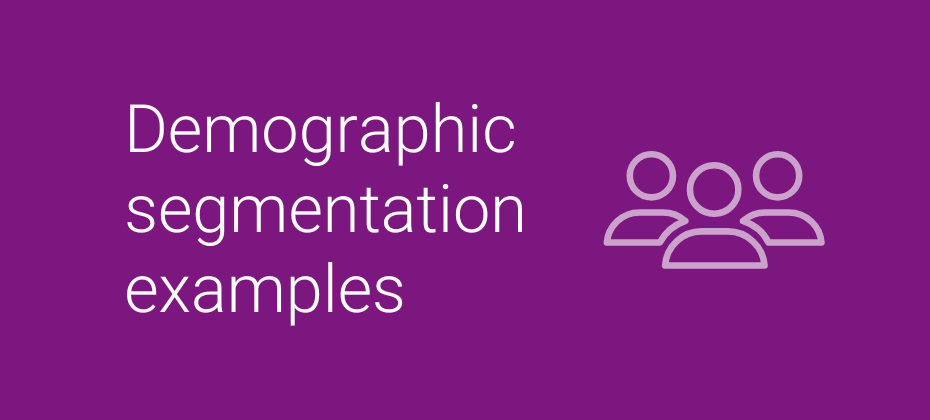
Not all customers are the same, so why waste your budget marketing to them like they are? McKinsey research shows that 71% of consumers want personalized shopping experiences, and 76% get frustrated when they don’t have them. That’s where demographic segmentation comes in. But what is demographic segmentation, exactly? We define it as a process that helps you categorize your audience into meaningful demographic groups so you can reach the right people with impactful custom messages. Businesses across industries are partnering with Experian to power smarter decisions and better results through solutions like demographic segmentation — but what does this look like in action? This article breaks down five real-world demographic segmentation examples, showing how businesses have worked with us to drive measurable success so you can see exactly how it can work for you. What is demographic segmentation? Demographic segmentation involves dividing your audience into smaller, more specific groups based on shared demographics like income, education, gender, job, family status, and more to gain a more granular understanding of your brand’s target segments. The better you know your audience, the better you speak to their unique needs — and the more effective your campaigns will be, as you’ll be able to target each segment with highly personalized content that resonates. For instance, a company might market a new tech gadget to young adults in one way while promoting the same product to families with young children in a completely different way, ensuring the message speaks to each group’s lifestyle and priorities. Demographic segmentation attributes Some of the most common attributes used in demographic segmentation include: Age Each age group has different wants and needs. A new video game might catch the eye of teenagers, while a retirement plan is more likely to appeal to someone in their 50s or 60s. Gender Gender impacts preference for certain products, from fashion to gadgets, so knowing who you’re talking to helps make your marketing more relevant. Income Someone with a higher income might be more likely to purchase premium products, while someone on a budget will respond better to discounts or value-based offers. Education The level of education a person has can influence what kind of messaging will resonate with them, whether it’s complex or more straightforward. Occupation A marketing message targeting busy professionals might differ from one aimed at students or retirees. Occupation can tell you what’s important to a person in terms of their needs and lifestyle. Family Status A family with young kids likely has different priorities than a single person or a couple without children. You can adapt your messaging to be more relevant to what matters most to them, like convenience or value. Benefits of using demographic segmentation Demographic segmentation offers several valuable benefits for marketers. Here’s why it’s one of the most commonly used and effective ways to target audiences: Improved targeting and personalization: Demographic segmentation powers highly customized campaigns so you can cater to different income levels, family structures, job types, and so forth. B2C brands can provide offers based on factors like age, income, and gender, while B2B brands can target by occupation to reach decision-makers. Better product and service development: Understanding which demographics use your product or service is a great way to inform future improvements. Higher engagement: With highly customized content, you can speak directly to specific demographic groups and increase engagement. Cost efficiency: As you target the most relevant segments, you optimize your spending around the most likely buyers and will see better returns. Increased conversion and retention: Relevant, targeted messaging leads to higher conversion rates, and when people feel understood, they’ll want to keep coming back. Clearer customer insights: Demographic data provides precise, actionable insights for refining your marketing strategy. Simplicity and effectiveness: Demographic insights are immediately actionable and easy to implement, which gives you a great starting point for focused campaigns. When to use other segmentation types While demographic segmentation provides valuable consumer insights, there are times when other approaches may offer a more effective strategy: Your business provides location-dependent services. If you strictly serve a local area, geographic segmentation would be more effective in targeting customers based on location. Your business offers hobby-centric products or services. Psychographic segmentation (based on interests, lifestyle, or values) may be more relevant than demographics alone for products related to specific interests or hobbies. You have access to detailed behavioral data. If you collect data on customer behavior (like browsing history or purchase patterns), behavioral segmentation would allow for more personalized targeting than demographics. You\’re selling high-end luxury products. While income is a useful demographic variable, psychographic factors like values, aspirations, and lifestyle better capture the desires of luxury consumers. Your target audience shares similar behaviors, regardless of demographic factors. Behavioral or psychographic segmentation might offer more insight if your customers engage with your product or service based on shared behaviors rather than demographic traits. Your product or service targets specific needs or pain points. Segmenting by need or issue rather than traditional demographic variables would likely yield better results if you\’re offering a solution to a particular problem (like a health-related product). How our customers are using demographic segmentation to produce tangible results Demographic segmentation is about knowing your audience and using data to create marketing strategies that drive measurable outcomes. Let’s look at some real-world use cases from brands like yours that have been successful in this effort, working with Experian to translate demographic insights into significant business growth. Use case #1: Identifying customer spending potential to boost growth for a retail chain Objective A large retail chain wanted to understand the spending potential of each customer in their stores. Their goal was to uncover and maximize untapped spending potential. Solution Experian conducted an analysis to identify the top demographic factors that drove spending in the retail store the previous year. Our consultants found the four key drivers were: Age Income Family structure (household composition) Location/region Results By combining these attributes to create segments, we uncovered two valuable annual estimates: Potential spend: A conservative estimate of how much a customer could spend if they reached the top 20% of spenders within their specific demographic segment (based on data from the highest spenders). Unrealized spend: The difference between a customer\’s annual potential spend and their current spend. An estimate of how much more they could be spending each year. These demographic segments provided the marketing strategy the retail chain used to target $1.1 billion in unrealized spend. This revealed how much additional revenue could be captured by targeting the right customers with tailored marketing and offers through demographic segmentation. Use case #2: Helping a financial institution identify regional DE&I opportunities Objective A large financial institution needed help identifying regional diversity, equity, and inclusion (DE&I) opportunities. They wanted to better prioritize their outreach to underserved communities in the Los Angeles area. Solution Experian\’s Custom Analytics team provided the data and insights to pinpoint specific areas needing attention. We used three key indices to analyze the region: Income index: Measured each underserved economic group by comparing the percentage of low-to-moderate income consumers against the entire L.A. area. Ethnicity index: Measured the percentage of consumers by ethnicity, such as African-American, Hispanic, Asian, and others, against the entire L.A. area. Credit index: Identified potential credit disparities by looking at the average FICO score and the percentage of customers with credit accounts against the entire L.A. area. Results Our client received an analytics dashboard to track and report these metrics, providing clear, traceable data to prioritize DE&I outreach. This dashboard helped them measure progress toward more inclusive practices. Use case #3: Segmenting a health supplement ambassador program for enhanced engagement Objective A health supplement company wanted to identify specific segments within their ambassador program to provide better support and increase engagement. Solution Experian’s Custom Analytics team developed tailored customer segments to address specific needs and behaviors. These segments included: Young and independent: Younger, lower-income singles or starter households who are just beginning to establish their own lives. Families with ends to meet: Young and middle-aged families with kids who are budget-conscious, often using coupons and enjoying fast food. High-end families: Middle-aged families with kids and high incomes, financially secure big spenders who also give to charities. Empty nesters: Older households with no kids who focus on cooking at home and may have more disposable income. Results Segmenting at registration allowed for more effective communication and engagement with prospects. Customized messaging, guided by customer demographics and purchasing behaviors, improved acquisition and retention by helping the right messages reach the appropriate individuals through their preferred channels. Use case #4: Comparing customer bases: Insights for a retailer across two cities Objective A national retailer with locations in two major cities (their home base city and a recent expansion city) wanted to understand how different their customer base was in each city. They aimed to uncover key demographic and behavioral differences to refine their marketing strategies and ensure each location received the most relevant messaging and promotions. Solution Experian’s Custom Analytics team analyzed each city’s customers across a wide range of characteristics:. Demographics: The expansion city had a younger population with more families, while the home base city had an older and more established customer base. Purchasing behavior: Customers in the expansion city spent more per transaction than those in the home base city. Preferred marketing approach: Customers in the home base city were likelier to be Brand Loyalists, responding well to familiar, trust-driven messaging. Shoppers in the expansion city were Savvy Researchers who responded better to value-based content and product comparisons. Results Using these insights, the retailer tailored its marketing approach to align with each location’s customer base: Home base city: Focused on maintaining loyalty by emphasizing brand trust and highlighting long-term customer benefits. Expansion city: Positioned marketing to appeal to younger, family-focused consumers to showcase high-value purchases and competitive pricing These adjustments led to improved engagement and higher sales in both cities. Use case #5: Optimizing direct mail to help a nationwide retailer maximize impact on a limited budget Objective Facing a shrinking marketing budget, a nationwide retailer needed to refine their direct mail strategy to reach the right customers while reducing costs. Solution Experian’s Custom Analytics team developed a comprehensive dashboard summarizing two dozen recent direct mail campaigns, which allowed the retailer to: Understand the demographic composition of high-response customers across different regions. Identify key patterns in response rates, helping them pinpoint the most receptive audiences. Discover that the Power Elite Mosaic Group representing affluent, high-spending households comprised only 17% of their mailed audience but accounted for 47% of responses. Results With these insights, the retailer restructured their direct mail strategy to target the highest-performing segments. Changes like these led to a 30% reduction in mailing costs while retaining 92% of sales, proving that strategic segmentation can drive efficiency without sacrificing revenue. Explore demographic segmentation with Experian’s Analytics Consulting team Now that we’ve provided a demographic segmentation definition and given you some real-world demographic segmentation examples, it’s time to get a deeper understanding of your audience. Our experienced consultants utilize Experian Marketing Data to create the demographic segments you need to enhance targeting and uncover hidden opportunities. Key features Expertise and experience: Our consultants bring a wealth of analytic knowledge and industry expertise, so you can utilize the latest techniques and best practices. Customized solutions: We provide tailored, custom solutions like demographic segmentation to address your specific needs and challenges. Data-driven insights: Our expertise in Experian Marketing Data quickly delivers valuable insights to optimize operations and identify new opportunities. Industry perspective: As external experts, our consultants offer the unbiased perspective necessary to see beyond internal biases and make objective decisions. Competitive advantage: Utilizing our analytic consultants gives your business a competitive edge by understanding market trends, customer behavior, and potential risks faster than your competitors. Connect with us today to see how our data and expertise can improve your targeting, personalization, and campaign performance. Connect with us Latest posts

In our Ask the Expert Series, we interview leaders from our partner organizations who are helping lead their brands to new heights in AdTech. Today’s interview is with Brian Mandelbaum, CEO and Co-Founder at Attain. About Attain Built for privacy — with visibility across all retailers, verticals and purchases — Attain provides solutions for the modern marketer. Its real-time measurement and optimization solutions coupled with high-fidelity audiences and proprietary insights enable marketers to drive valuable business outcomes. The power of transaction-based audiences Attain’s real-time transaction data provides a 360-degree view of consumer behavior. What makes this approach more effective than traditional demographic or behavioral targeting? Attain is the industry’s most trusted source of live purchase data, powered by a robust panel of 8 million fully permissioned consumers. Our platform delivers unmatched, real-time visibility into consumer purchase behavior across retailers, industries, and payment methods. Marketers gain deep insights — such as in-store vs. online purchases, payment methods, purchase frequency, cart contents, and average transaction value — enabling more precise audience targeting and media strategies. With Attain’s rich, transaction-based data, marketers can optimize campaigns with direct, actionable sales signals. Ensuring data accuracy and relevance Attain curates audiences using real-time transaction data, but advertisers often ask whether this data is deterministic or probabilistic. Can you clarify your methodology, and if probabilistic, how do you ensure accuracy and representation across the entire US population? Our transaction data comes directly from the largest live purchase data panel in the U.S. Covering over 10,000+ merchants and $600B in cumulative spend, our dataset offers a complete and dynamic view of real-world purchase behavior. Using advanced machine learning, we scale this data to represent the entire U.S. population with unmatched accuracy, ensuring a balanced and unbiased reflection of consumer spending patterns. Our rigorous methodology eliminates outliers, continuously optimizing for precision and stability, so marketers can trust our insights for better targeting, measurement, and optimization. Privacy-first data practices Attain is built on a privacy-first, consumer-permissioned model. There are many ways to capture purchase data—why did Attain choose a panel-based approach, and how does this method compare to other collection strategies in terms of accuracy, scale, and compliance? Attain’s panel-based approach is the foundation of our privacy-first, consumer-permissioned model. By capturing real-time transaction data directly from our opted-in consumer panel, we ensure unmatched accuracy and ethical data sourcing — paramount in today’s privacy-conscious world. In exchange for sharing their data, consumers receive valuable benefits like early wages, savings tools, and shopping rewards, with no hidden fees. Unlike legacy third party data providers, our directly sourced transaction data provides deeper, more precise insights, enabling highly granular and actionable audience segments. Our continuously growing panel reflects a broad cross-section of U.S. consumers while maintaining strict privacy and compliance standards. We fully adhere to regulations like CCPA and GDPR, giving both consumers and advertisers confidence in the responsible use of data. Attain’s approach delivers the ideal balance of accuracy, scale, and compliance—while prioritizing consumer trust. Cross-channel addressability With brands activating audiences across display, mobile, and CTV, how does Attain’s purchase data help advertisers refine their cross-channel strategies? Attain’s purchase data empowers advertisers to refine cross-channel strategies with smarter, data-driven insights. Our real-time transaction-based audiences enable scalable activation across display, social, online video, and addressable TV — ensuring campaigns reach high-intent buyers more likely to convert. By applying purchase-based audiences across all channels, marketers are utilizing the strongest signals possible, which enables a more effective holistic strategy to drive to that ultimate sales outcome. Whether through social media, TV/CTV, mobile, or programmatic platforms, Attain helps brands connect with consumers at key moments in their buying journey, maximizing media impact with real behavioral insights instead of proxies. With an expansive and growing network of media partners, Attain ensures brands reach their audiences wherever they are, delivering consistent, high-impact messaging. Whether optimizing for brand awareness or performance, our data helps marketers make smarter decisions to drive superior results. Proven performance with live purchase feedback Attain moves beyond traditional proxy metrics by providing live purchase data. How does this help advertisers optimize campaigns while they’re still running? What sets Attain’s audiences apart isn’t just the data fidelity and holistic coverage of consumer behavior, it\’s that they’re built and validated using live, privacy-safe purchase signals. Advertisers can execute campaigns confidently, knowing that they’re reaching real consumers based on recent, real-world transactions, not outdated models or inferred, probabilistic behaviors. Attain’s ability to measure sales lift across a wide range of inputs means that marketers can easily understand which audiences are driving actual sales outcomes during flight. This unlocks smarter mid-campaign optimizations, discovering new audiences, and fine-tuning targeting — to ensure audience performance continually improves against real revenue goals. Attain’s closed-loop approach gives advertisers a faster path from targeting to transaction, helping brands maximize the value of every impression. Industry-specific use cases Beyond CPG, Attain supports industries like QSR, retail, and financial services. Can you share a compelling example of how brands in these verticals are utilizing your audiences? Attain’s audiences provide a comprehensive view of the consumer, capturing all aspects of their purchase behaviors — from travel and dining to TV content consumption and shopping habits. This broad perspective offers brands a far richer set of buying signals than ever before, enabling them to make more informed decisions across the entire consumer journey. Quick service restaurants (QSR): With a comprehensive view across all transaction types (cash, credit, debit) – Attain enables QSRs to capture a full picture of customer spend at their nationwide locations. Ensuring these brands have holistic coverage across all sales channels, powered by a direct relationship with the consumer, Attain captures transactions both in-store, online, and through 3P delivery apps like UberEats and Grubhub. This powers Attain’s deep insights, which QSRs can use for intelligent, precise targeting- including frequent visitors, competitive share, products purchased, and more. QSRs can use this data to solve a variety of business objectives, like retention/growth, competitive conquesting, and more. Retail: In retail, Attain provides a wide range of audience segments, including loyalty shoppers, in-market buyers, competitive shoppers, and even adjacent buyers who may be interested in similar products. By combining these segments, retailers can optimize their campaigns to target real-time shoppers with the highest intent, rather than relying on outdated or generalized profiles that other providers might offer. Additionally, with our industry-leading refresh rate, brands benefit from the most up-to-date data, ensuring their campaigns are always aligned with the latest consumer behaviors. Financial services: In the financial services sector, Attain’s purchase data helps identify consumers who are actively considering financial products such as credit cards or loans. By understanding their purchasing behaviors, marketers can deliver highly personalized and relevant offers to those already displaying intent, leading to better conversion rates and more effective acquisition strategies. Integration with Experian\’s marketplace Attain is now available through the Experian marketplace. How does this integration make it easier for advertisers to activate and scale your audiences? Attain’s integration with Experian marketplace makes it easier than ever for advertisers to activate our purchase-based audiences across TV, social, and programmatic. This partnership makes Attain’s data even more accessible, supporting our mission to build the most comprehensive and trusted consumer data ecosystem. With direct access to our real-time audiences within Experian’s marketplace, advertisers can more efficiently launch campaigns at scale and make more precise, data-driven decisions. As one of Experian’s inaugural partners, we’ve already seen strong adoption and demand, reinforcing the value of this partnership. The future of transaction-based targeting As the use of transaction data in advertising continues to grow, what changes do you anticipate in how brands will apply it for targeting and measurement? And how is Attain evolving its approach to support those shifts? As transaction data reshapes advertising, brands can shift from targeting probabilistic audiences to reaching high-intent consumers for greater ad relevance and conversions. Purchase data also unlocks highly accurate incrementality measurement, closing the loop and revealing which tactics and channels drive true incremental sales. Attain’s platform is built for outcomes-driven advertising, capturing data across the entire media cycle to continuously optimize performance. As we continue to make investments in AI and machine learning into our platform, our insights will become even more actionable and efficient — helping brands maximize impact, drive incrementality, and fuel long-term growth. Thanks for the interview. Any recommendations for our readers if they want to learn more? To explore our audience segments, visit the Attain website or contact your Experian account representative to schedule your free match test. Contact us About our expert Brian Mandelbaum, CEO and Co-Founder, Attain Brian Mandelbaum, a veteran entrepreneur and investor, is the co-founder and CEO of Attain, North America’s largest opt-in purchase platform. Prior to Attain, Brian founded Clearstream TV, a data-enabled video distribution platform acquired by Engine Group in 2015. He brings over 20 years of experience in data-driven digital media, collaborating with top agencies and major brands. Latest posts

